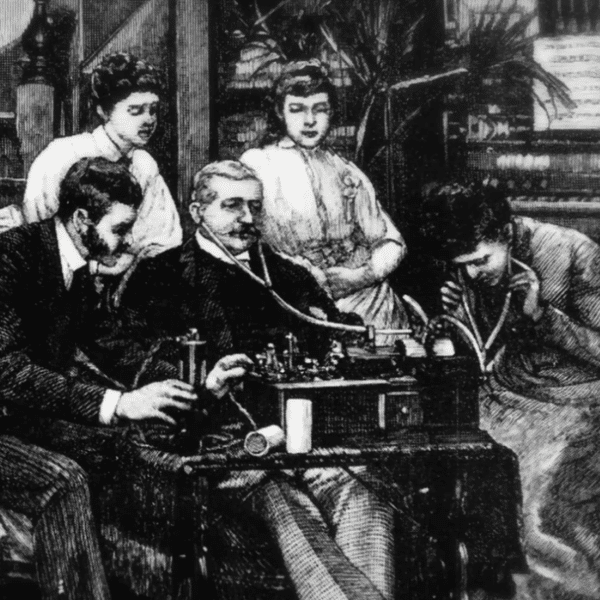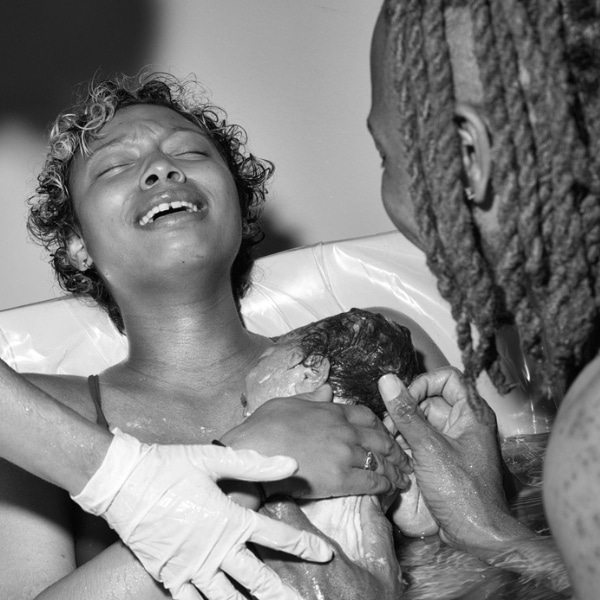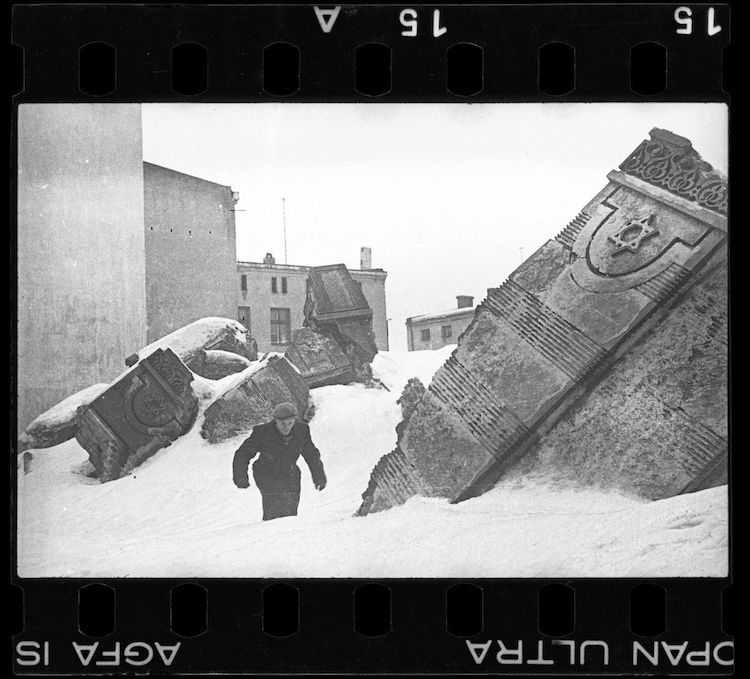
A man walking in winter in the ruins of the synagogue on Wolborska street (destroyed by Germans in 1939).
Henryk Ross was one of over 3 million Jews living in Poland at the start of World War II. As a photographer for the Department of Statistics for the Jewish Council (or Judenrat), he was responsible for documenting life in Lodz's Jewish Ghetto during the city's Nazi occupation.
Ross had been working as a photojournalist when he and 160,000 Jews were corralled into a small, 1.6-square-mile section of Lodz's Old Town in what was destined to become the Lodz Ghetto. Once inside, he was charged with shooting identification photographs and images of factories that would be used as propaganda for the German army. In reality, these factories used Jewish slave labor to produce items for the war.
In between assignments, Ross daringly captured all sides of life in the Ghetto. These unofficial photographs show mass deportations to the Chelmno and Auschwitz death camps, community celebrations, and daily life inside this enclosed area. From 1940 to 1944, Ross accumulated almost 6,000 unauthorized images, which he then buried for safekeeping during the liquidation of the Ghetto. It was his hope that these images would serve as an important historical documentation of the atrocities that took place in Lodz.
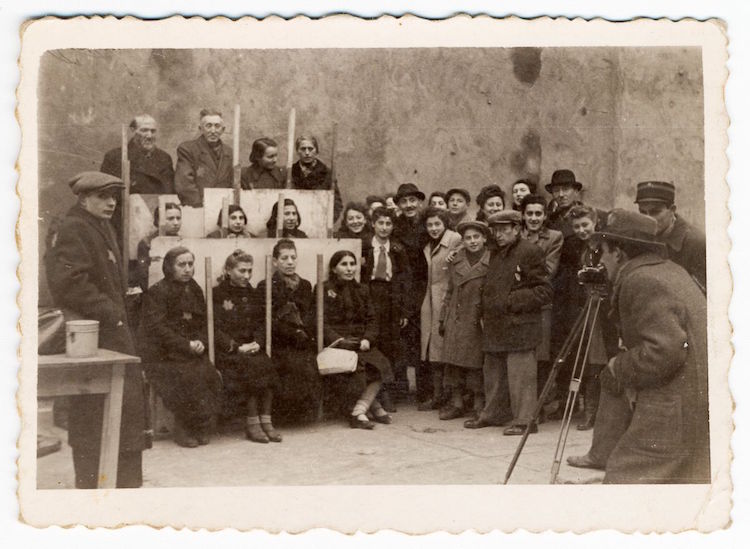
Henryk Ross photographing for identification cards, Jewish Administration, Department of Statistics.
“Having an official camera, I was able to capture all the tragic period in the Lodz Ghetto. I did it knowing that if I were caught my family and I would be tortured and killed,” explains Ross.
Assisted by his wife Stefania, Ross stealthily hid his camera under his coat, quickly taking it out for snaps when the moment was right. “[Stefania] was frequently on the lookout when he was taking the covert photographs and she was making sure that there was no [one] coming,” shares Kristen Gresh, curator of photographs at the Museum of Fine Arts (MFA) in Boston, which is currently holding an exhibition of Ross' photos. “Toward the end, they managed to sneak into a space where there was a little hole in the wall that they could actually view the train station to photograph the deportation.”
Later, in 1945, Ross was able to dig up the box following the liberation of Poland, one of just 844 survivors who passed through the Lodz Ghetto. Unfortunately, water damage destroyed about half the images, but the others remain as testimony of Jewish life under occupation. In fact, his images were even used during the 1961 trial of Nazi Adolf Eichmann, where Ross also testified.
Henryk Ross' courageous images are on view at the Museum of Fine Arts Boston through July 2017 in the exhibition, Memory Unearthed.
Henryk Ross bravely risked his life to capture these unauthorized photos of life in the Jewish Ghetto of Lodz during World War II.
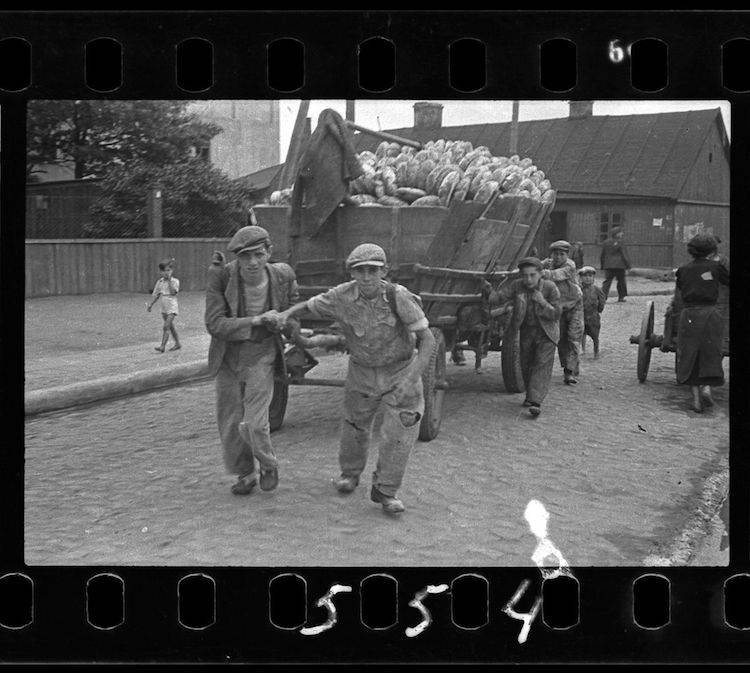
Men hauling cart for bread distribution.
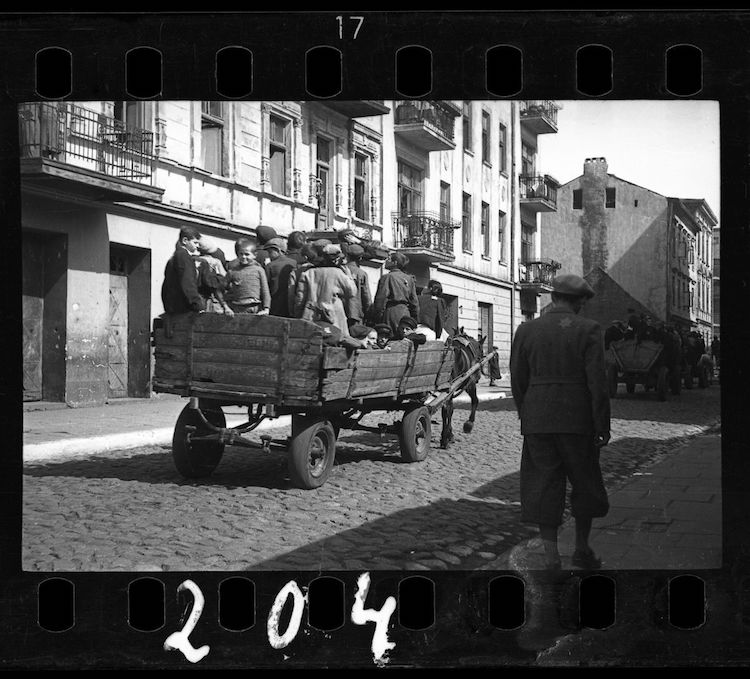
Children being transported to Chelmno nad Nerem (renamed Kulmhof) death camp.
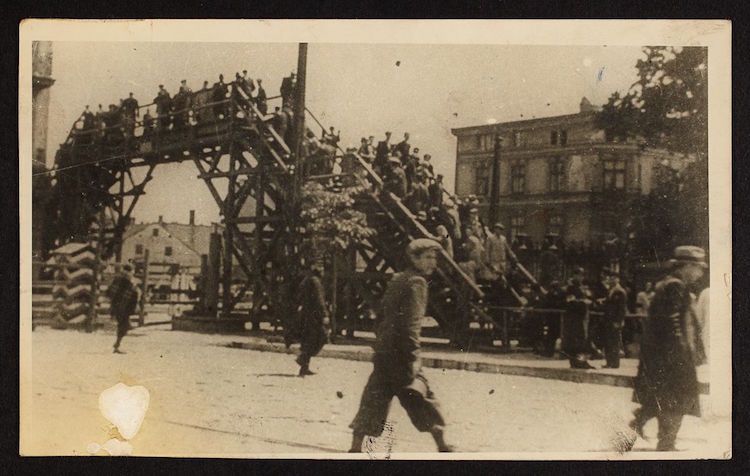
A boy walking in front of the bridge crossing Zigerska (the “Aryan”) street.
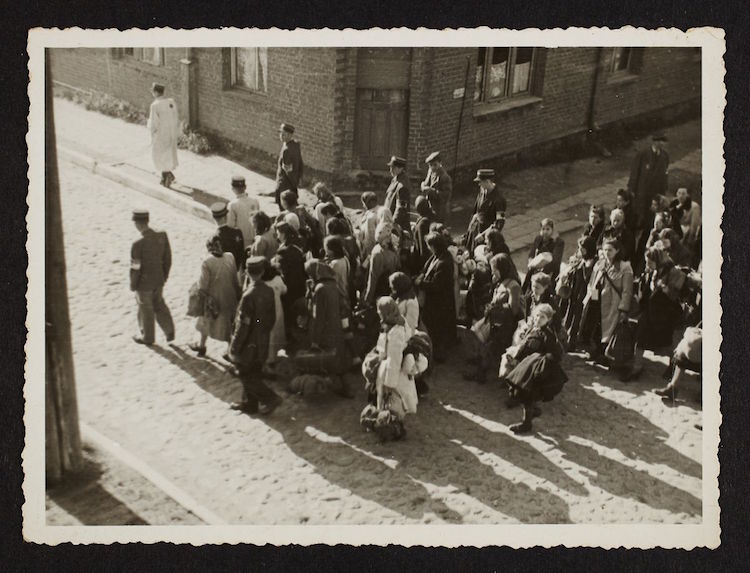
A mass deportation of ghetto residents.
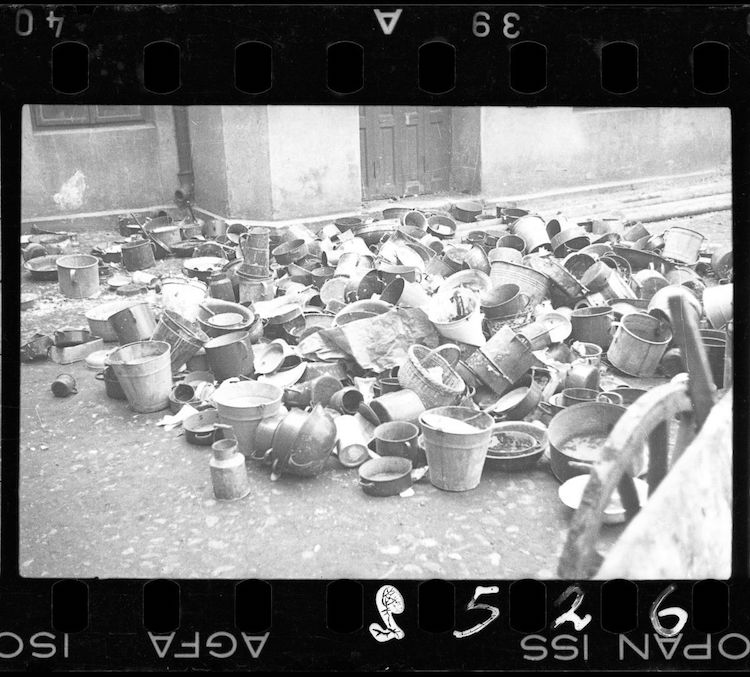
Food pails and dishes left behind by ghetto residents who had been deported to death camps.
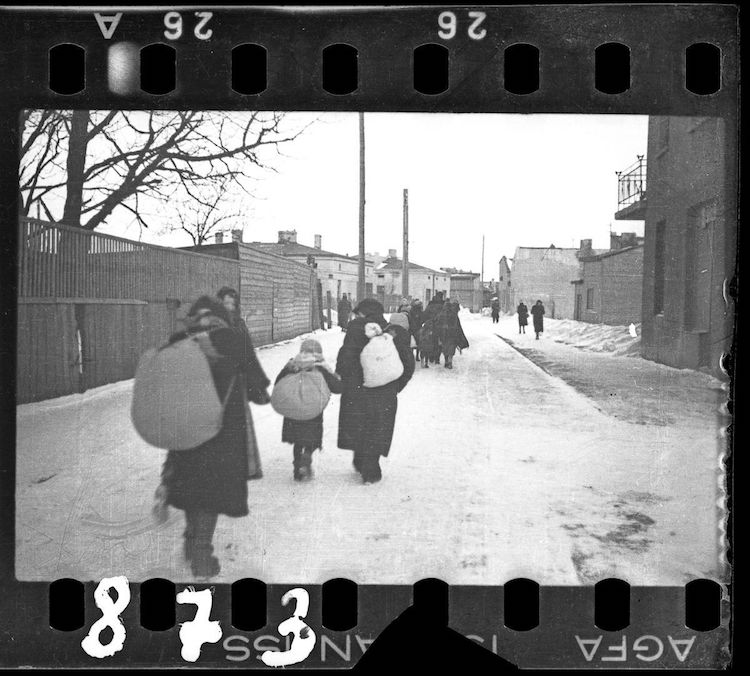
Deportation in winter.
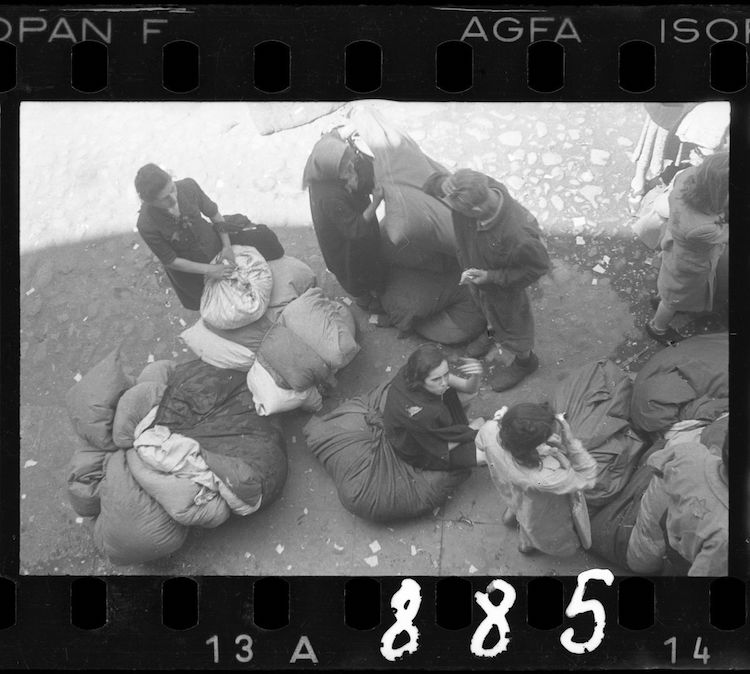
Residents sorting belongings left behind after deportation.
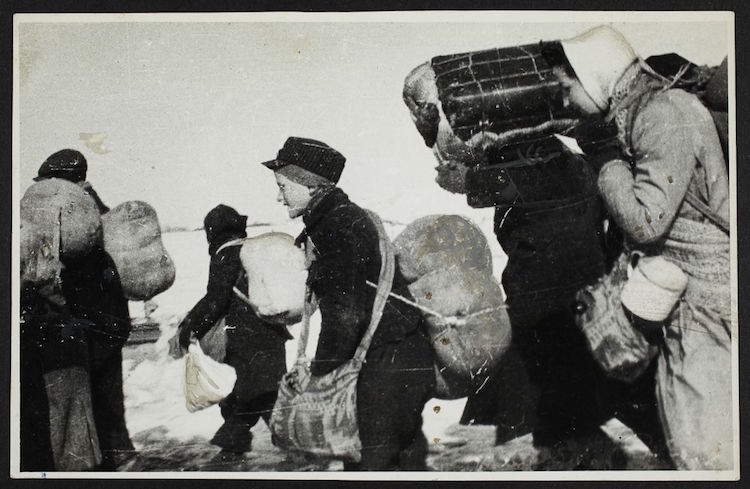
A boy walks among a crowd of people being deported in winter.
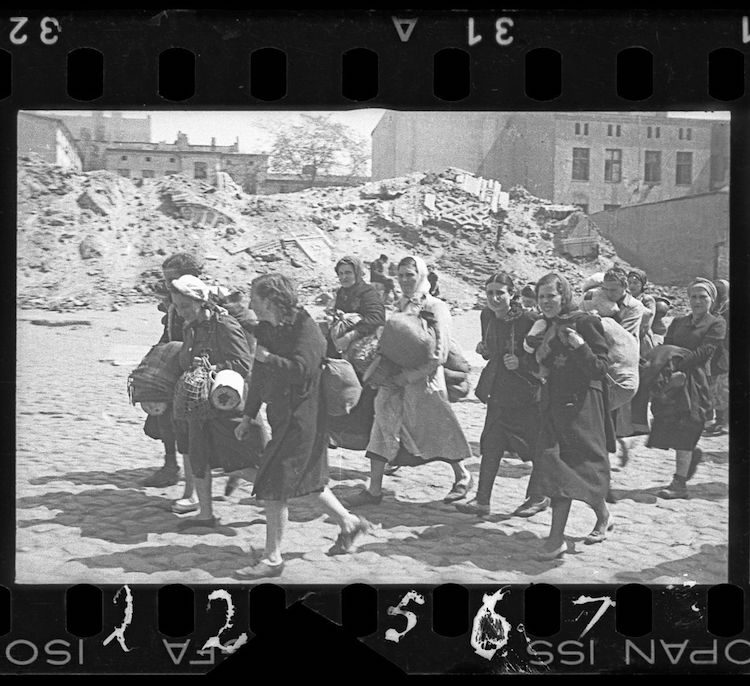
A group of women with sacks and pails, walking past synagogue ruins heading for deportation.
Ross' photos are a testament to 200,000 Jews who passed through the Lodz Ghetto. Only 844 survived until the liberation of Poland.
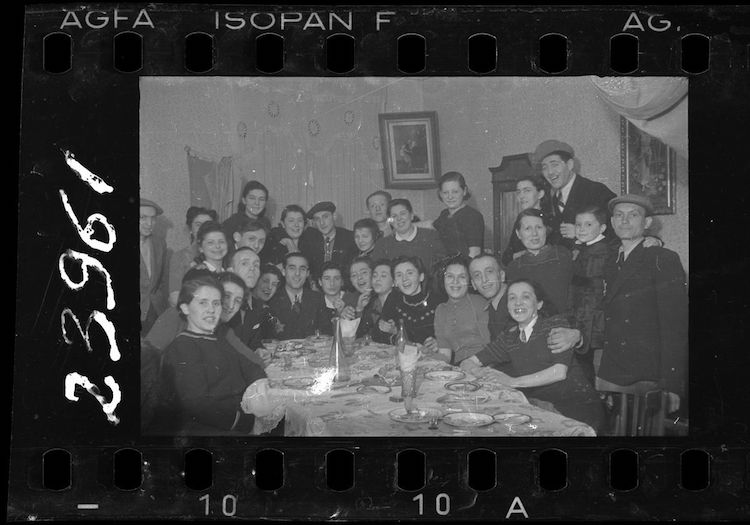
A festive occasion.
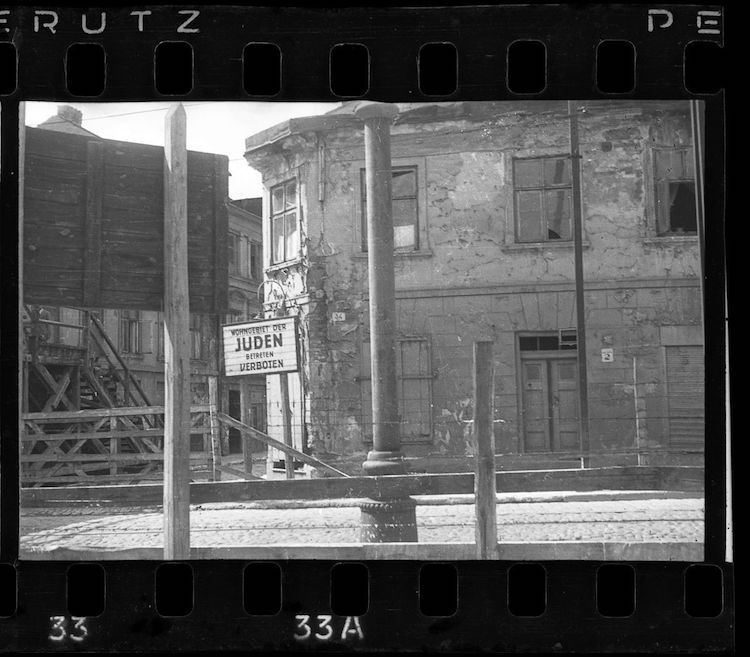
Sign for Jewish residential area (“Jews. Entry Forbidden”).

A boy searching for food.
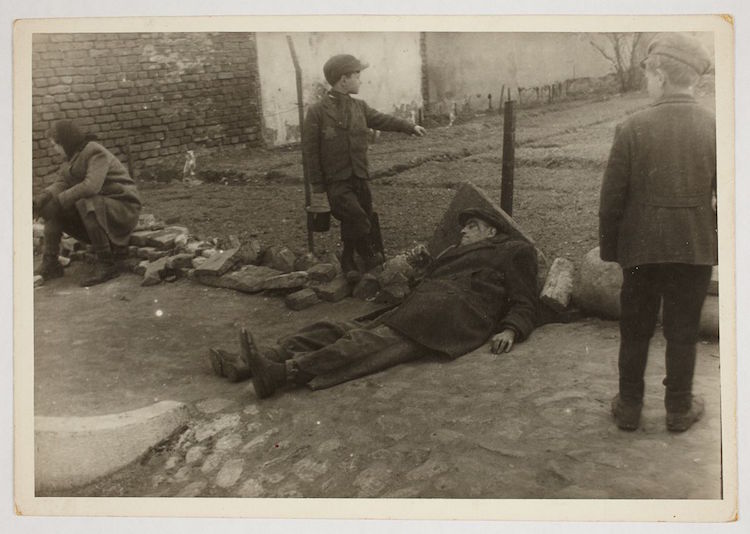
A sick man on the ground.
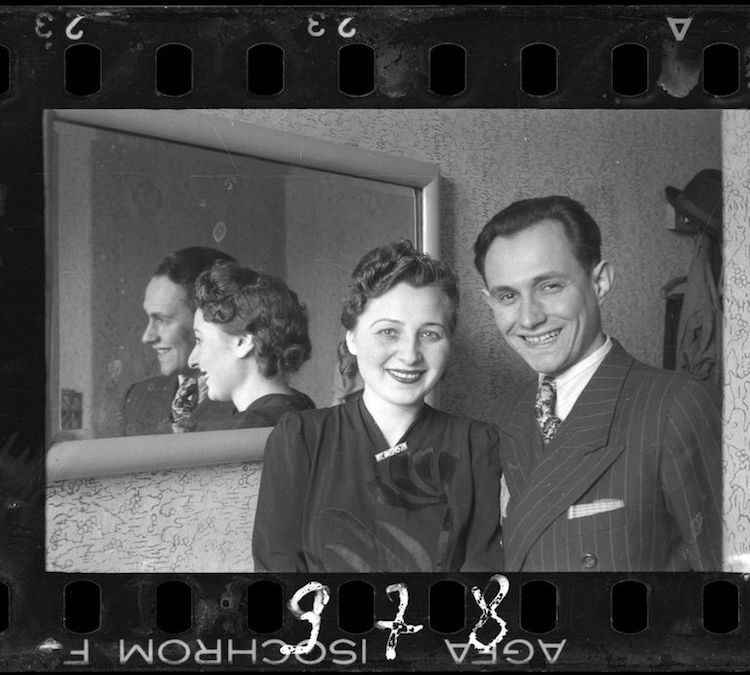
Portrait of a couple.
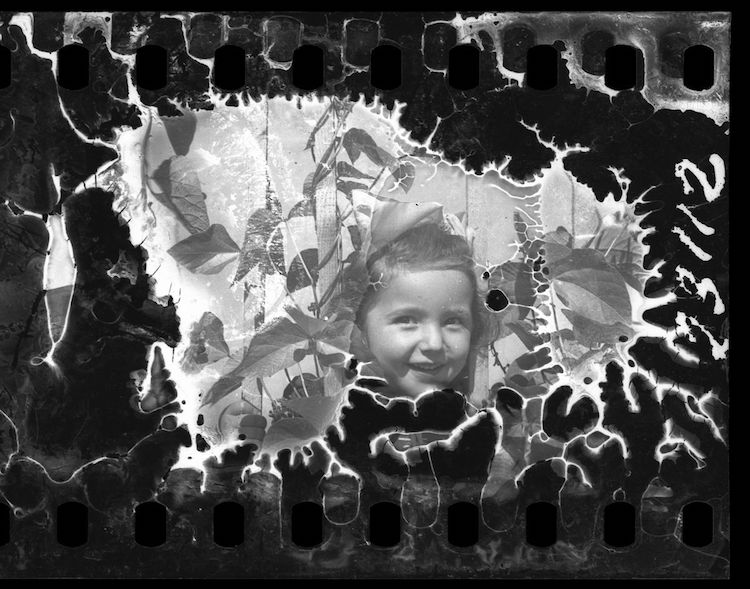
A smiling child.
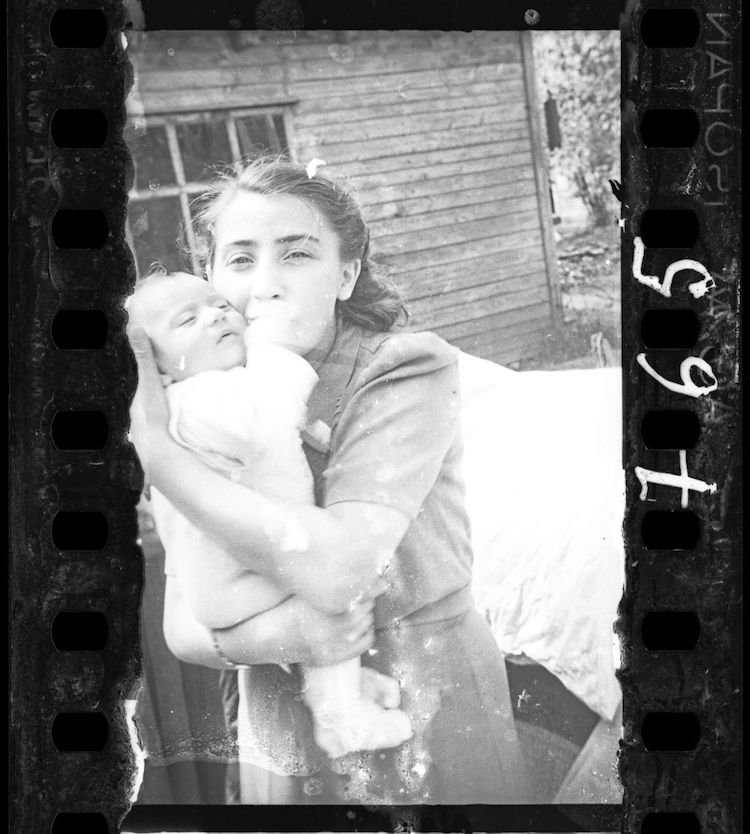
Woman with her child (Ghetto policemen's family).


Young girl.
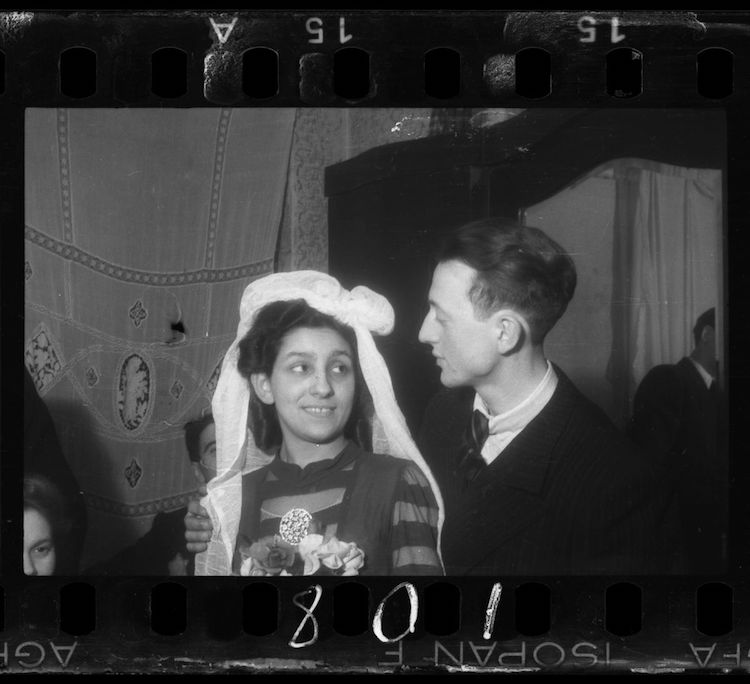
A wedding in the ghetto.
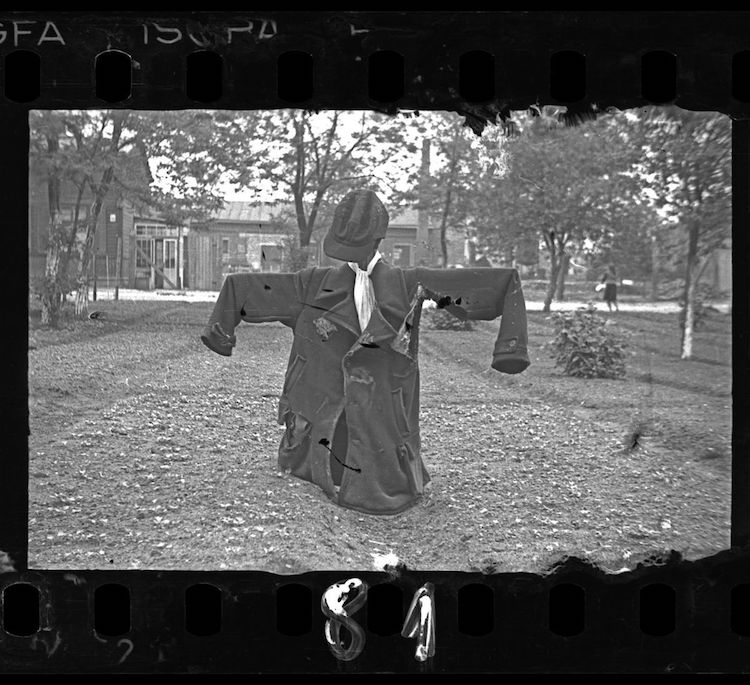
A scarecrow with a yellow Star of David.
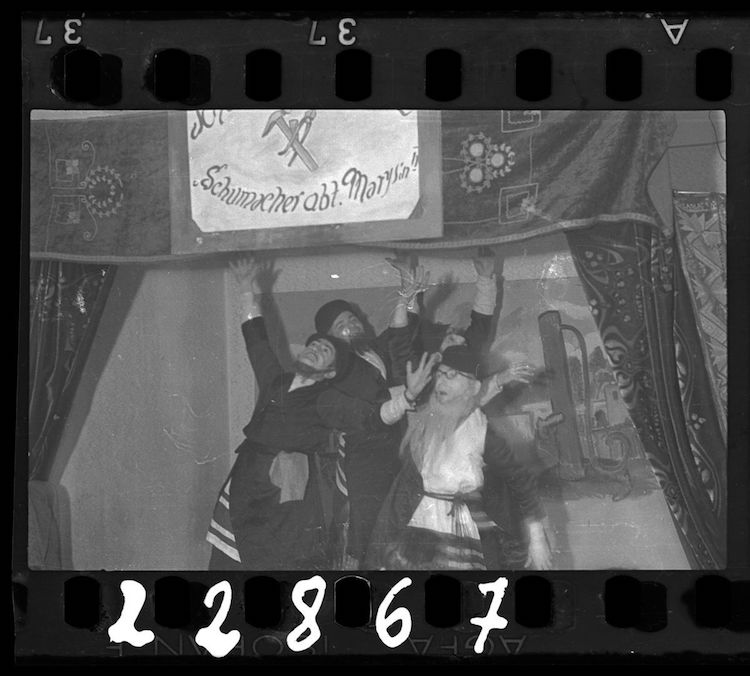
A performance of ‘Shoemaker of Marysin' in the factory.
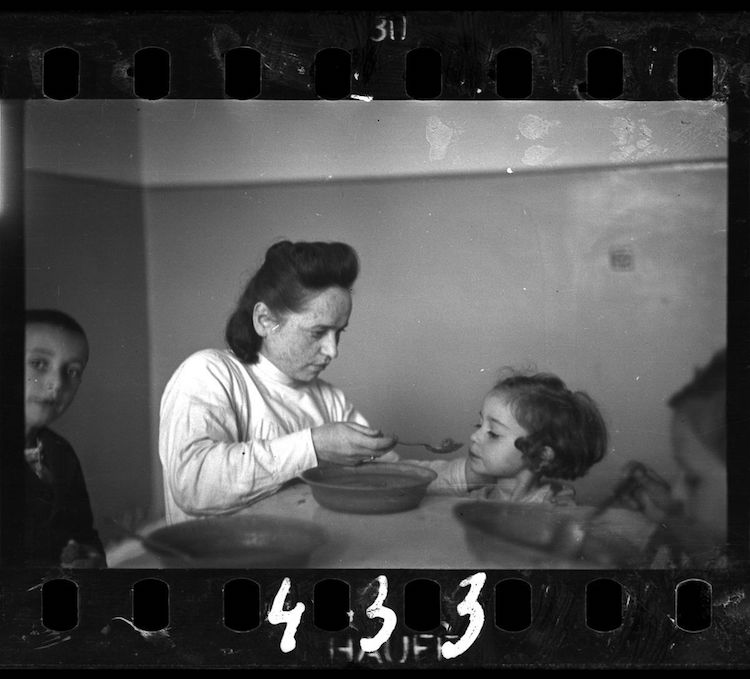
A nurse feeding children in an orphanage.

A man who saved the Torah from the rubble of the synagogue on Wolborska Street.





















































































